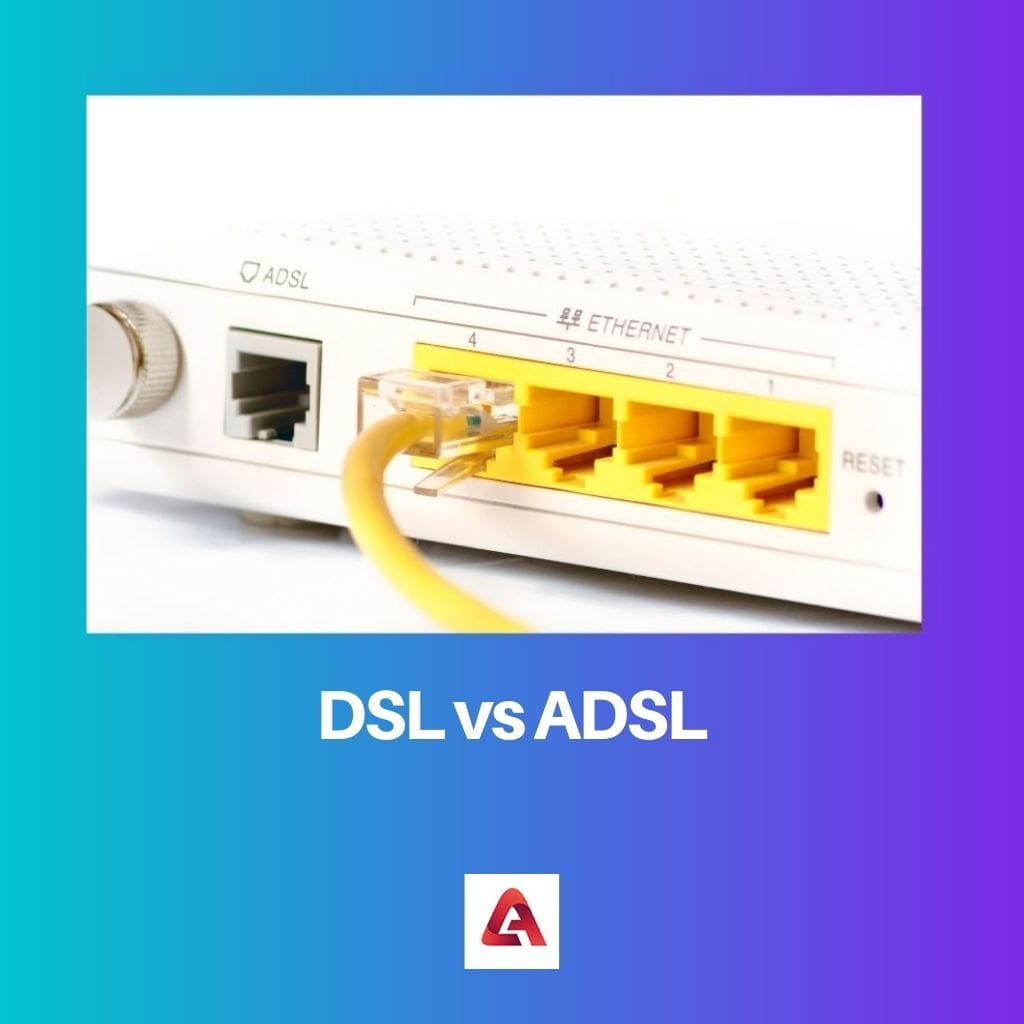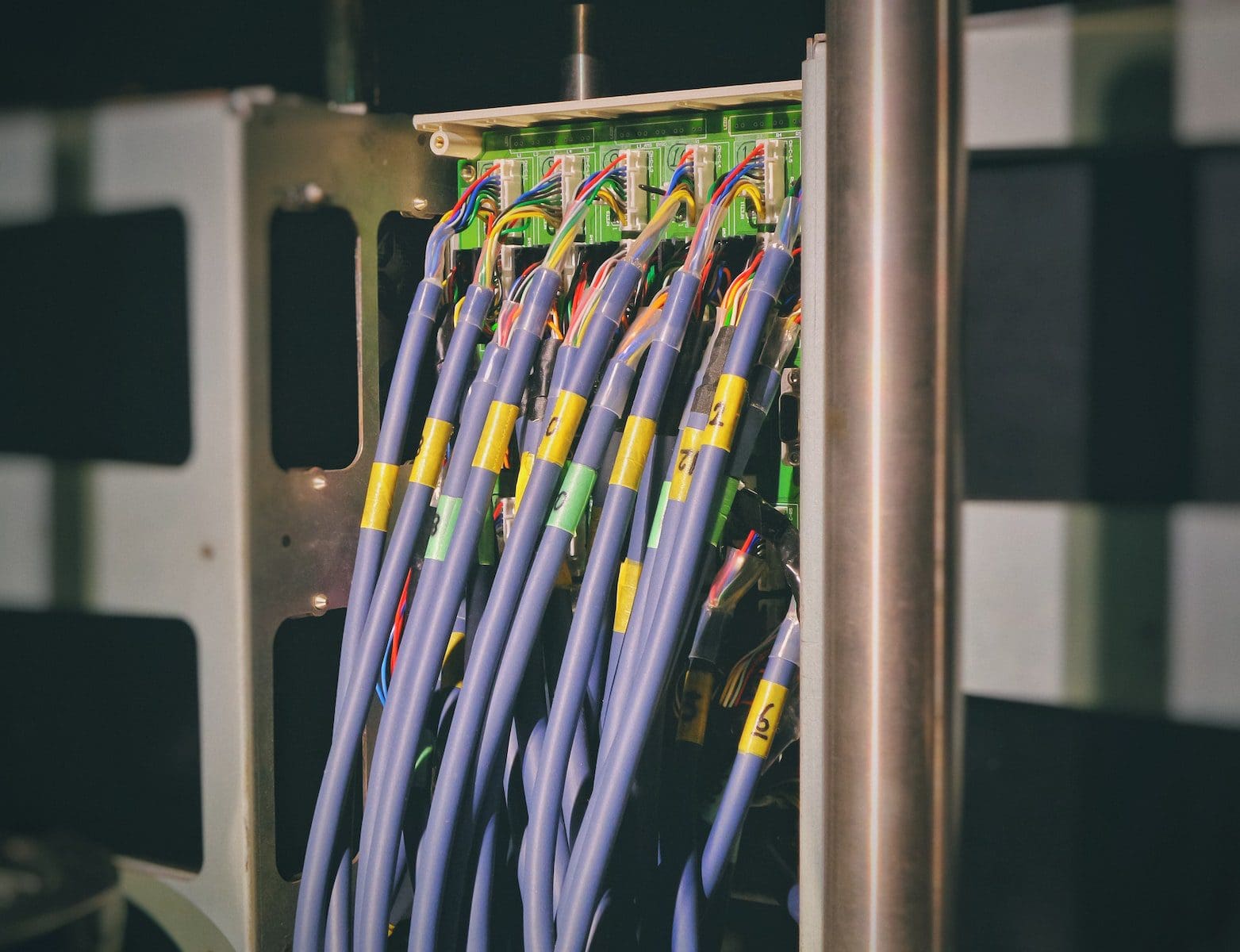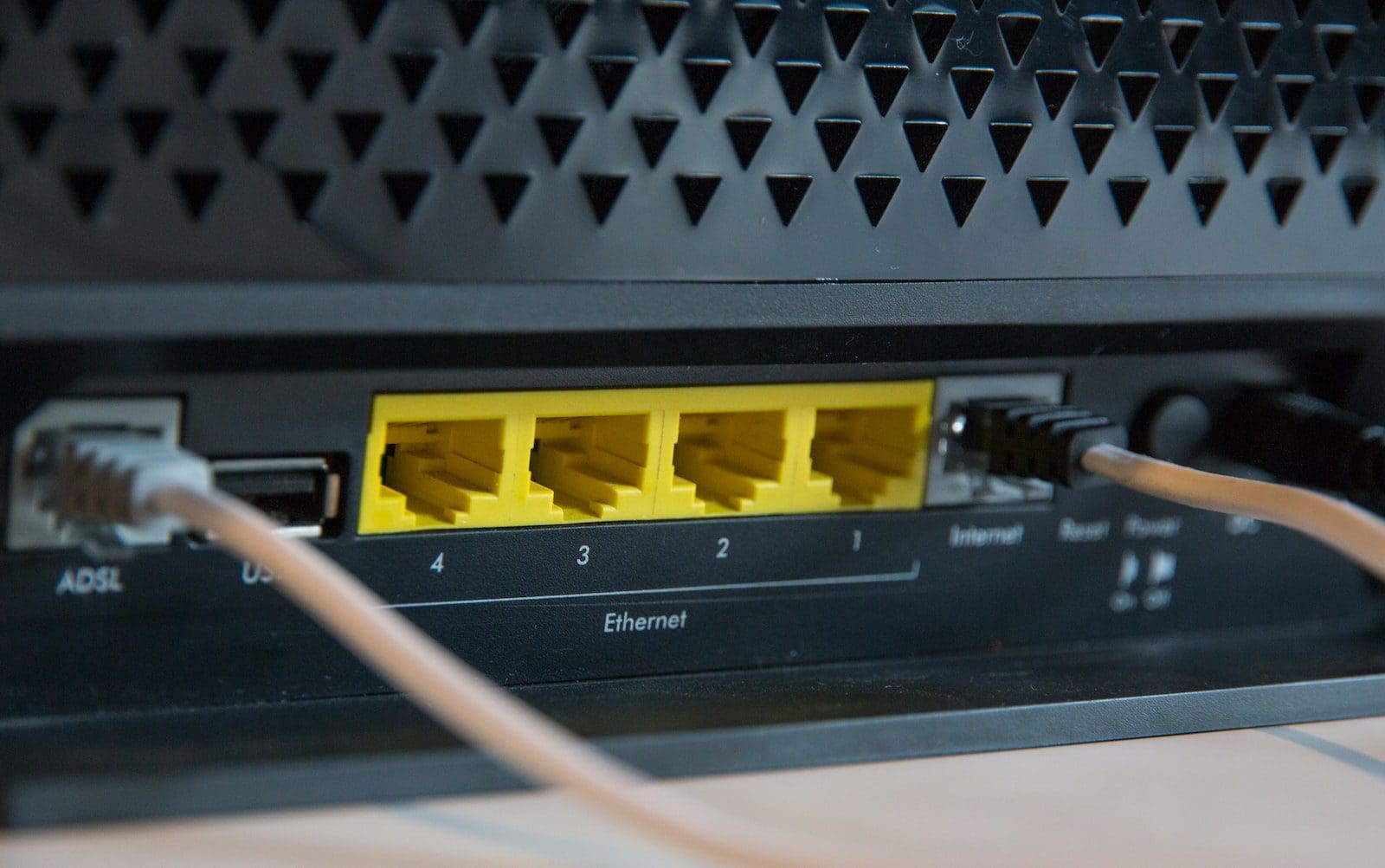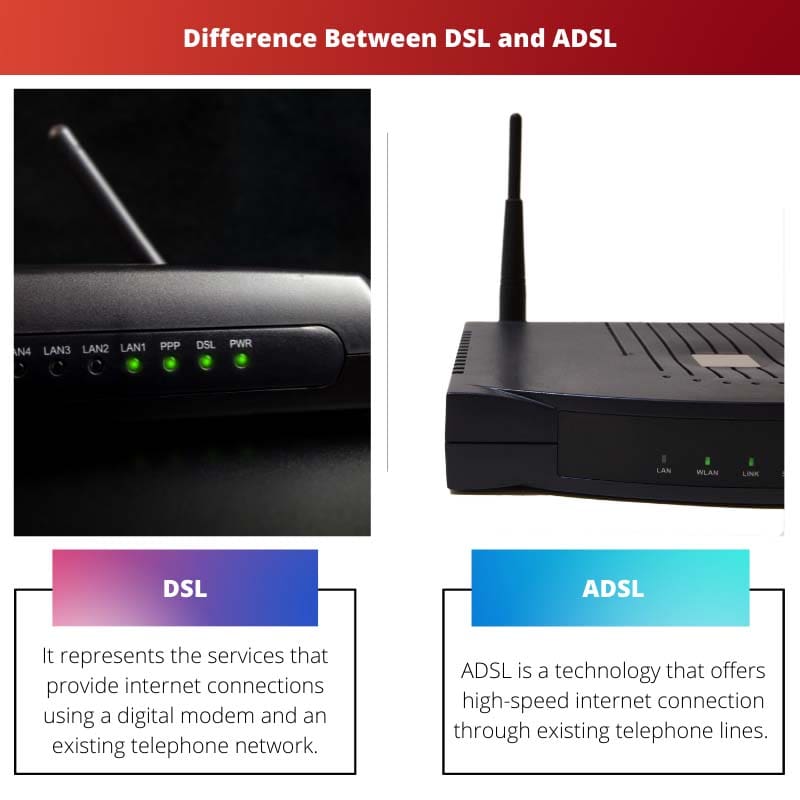Technology has become so crucial that mostly everything depends on technology. However, without the internet, technology would not have been possible.
This brings DSL and ADSL in. The most broadly used form of internet connection is Broadband internet. It is widely used because of its high speed and efficiency.
The two high-speed broadband Internet connections are DSL and ADSL. You can get them through your current telephone line.
DSL stands for Digital Subscriber Line. ADSL stands for Asymmetric Digital Subscriber Line.
If you want to use DSL or ADSL, it does not mean you have to upgrade your telephone line. These do not stand in the way of your regular telephone service; they can be used simultaneously without any obstruction.
Key Takeaways
- DSL (Digital Subscriber Line) is a general term for a family of technologies that provide internet access over telephone lines, using a high-frequency signal separate from the voice signal.
- ADSL (Asymmetric Digital Subscriber Line) is a type of DSL technology characterized by differing upload and download speeds, with faster download speeds than upload speeds.
- ADSL is a type of DSL technology, but DSL encompasses a wider range of technologies that deliver internet access over telephone lines.
DSL vs ADSL
The difference between DSL and ADSL is that DSL represents the internet, which uses digital relations between a phone line and a modem. On the other hand, in ADSL, the data-sending speed is known as upstream, and the data-receiving steam is called downstream.

Comparison Table
| Parameter of Comparison | DSL | ADSL |
|---|---|---|
| Full form | Digital Subscriber Line. | Asymmetric Digital Subscriber Line. |
| Type | DSL is the common term for Digital Subscriber Line. | ADSL is a type of DSL. |
| Speed | Upload and download speed is almost the same. | The download speed is faster as compared to the upload speed. |
| Part | DSL is a family of technology. | ADSL is a part of this family. |
| Nature | It is not asymmetric | It is asymmetric. |
What is DSL?
The full form of DSL is Digital Subscriber Line. It represents the services that provide internet connections using a digital modem and an existing telephone network.
The main benefit of DSL is that you can use the internet connection even while making calls, as it works within the frequencies. There will be no interruptions.
The only trouble is that one has to be near the telephone network to have high-speed internet. As you move far from the telephone network, you may have a less speed internet connection.
The telephone services supply DSL which offers fast internet using an existing telephone network. The telephone copper wires have a large number of frequencies.
Out of this, a small amount is used for telephone communications. Hence, both the telephone, as well as the DSL modem can be used simultaneously.
The different types of DSL are SDSL, VDSL, and ADSL.
The two main types are
- Symmetric DSL- In this type of connection, the upload and download speed is the same.
- Asymmetric DSL- The most famous type of DSL is Asymmetric DSL. People download more data than upload. Hence, asymmetric DSL provides more download speed than upload speed.
Advantages of DSL
- It is broadly and easily available as it is built using existing telephone lines.
- The cost of DSL is less compared to satellite or broadband connections.
- You can use internet connections even while making calls.
Disadvantages of DSL
- One must be near the telephone to have a high-speed internet connection.
- These cost more than other faster types of connections.

What is ADSL?
The full form of ADSL is Asymmetric Digital Subscriber Line. ADSL is a technology that offers high-speed internet connection through existing telephone lines.
In the ADSL network, the data-sending speed is called upstream, and the data-receiving rate is called downstream. Both speeds are not the same; rather, they differ from time to time.
ADSL is a famous type of broadband available. This is so because it can be connected through existing telephone lines which almost every home has.
It is pretty simple to sign up at minimal charges.
When one uses an ADSL broadband network, a microfilter is put into his phone connection which splits up the frequency of his phone line and broadband connection.
With the help of this micro-filter and the ADSL modem, he can use the web even while chatting on the phone.
In ADSL, the word ‘asymmetric’ implies that the download speed is higher than the upload speed. It has a downstream rate of 1.5 to 9 Mbps and an upstream rate of 16 to 640 Kbps.
ADSL supplies a high-quality, good internet connection. However, if you move away from your telephone network, you may have a slower internet connection.

Main Differences Between DSL and ADSL
- DSL is the general term for the Digital Subscriber line, whereas ADSL is a type of DSL.
- The full form of DSL is Digital Subscriber Line. The full form of ADSL is Asymmetric Digital Subscriber Line.
- ADSL represents the internet, which uses digital relations between a phone line and a modem. In the ADSL type of network, the data-sending speed is called upstream, and the data-receiving speed is called downstream.
- In DSL, the upload and download speed is almost the same. On the other hand, in ADSL, the download speed is faster than the upload speed.
- DSL is the main technology family, whereas ADSL is a part of this family.
- DSL is not asymmetric, whereas ADSL is asymmetric.

- https://dl.acm.org/citation.cfm?id=582879
- https://books.google.com/books?hl=en&lr=&id=VWaMdIq2w8QC&oi=fnd&pg=PR13&dq=DSL+and+ADSL&ots=rUiPDpr3RQ&sig=q8QpqLV2AaYfAEH92AeYya_rcpA

The concept of high-speed internet being unavailable as you move away from the telephone network is quite ironic.
It is indeed interesting.
Unfortunately, it’s the way it is.
The availability and cost advantages of DSL and ADSL are sensible. Perhaps technology will improve the downsides in the future.
Let’s hope so.
Until then, we have to deal with what we have.
For areas close to telephone networks, DSL and ADSL offer great internet connectivity options. But for those far from such networks, the options are subpar.
It’s disappointing to think that technology has failed to reach everyone.
The explanation of DSL and ADSL, along with their comparison, is quite informative. It’s helpful to understand the differences.
Absolutely, it’s quite comprehensive.
The high-speed internet disadvantage of being far from the telephone network is certainly a cause for concern.
This is a matter that needs to be addressed.
It’s a significant drawback.
Accessing both the internet and telephone simultaneously is a great advantage of ADSL broadband. It’s very convenient.
I totally agree, it has simplified our lives.
However, this does not help those who are far from a telephone network.
I think it’s hilarious that high-speed internet can only be accessed if you’re near the telephone network. I wouldn’t have guessed that in today’s day and age.
Yes, it’s a daunting downside to such a useful technology.
The speed difference between upstream and downstream in ADSL is frustrating. One would think that after all this time, they would have fixed that.
Yes, it seems like an unnecessary discrepancy.
At least there’s an option, even with its downsides.
Accessing the internet while making calls is a significant advantage, as it allows more productivity.
It’s a good point.
The advantages and disadvantages of DSL and ADSL are clearer with this detailed explanation. However, it definitely showcases the limitations of the technology.
The downsides should motivate progress.
Indeed, it’s clear but not without its problems.